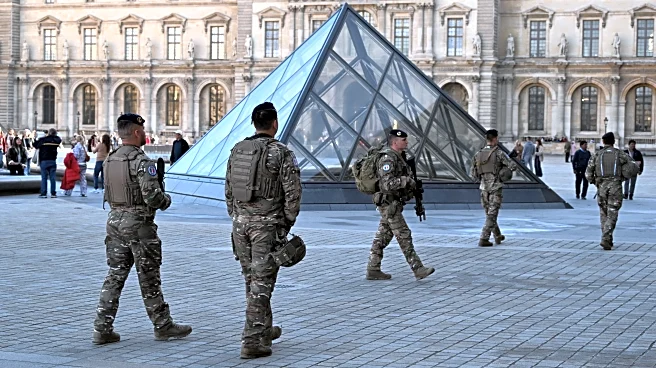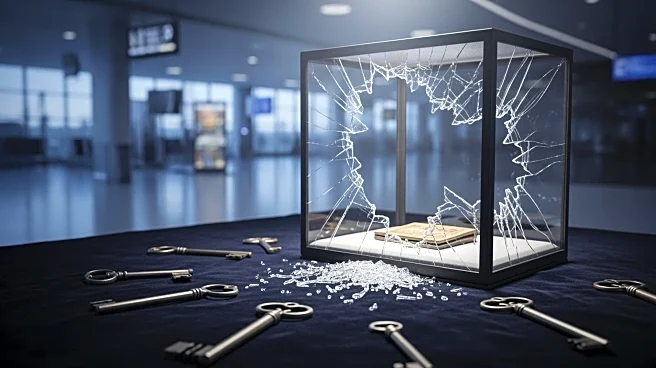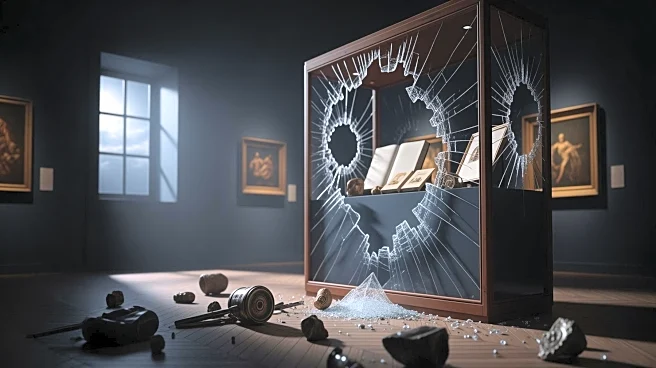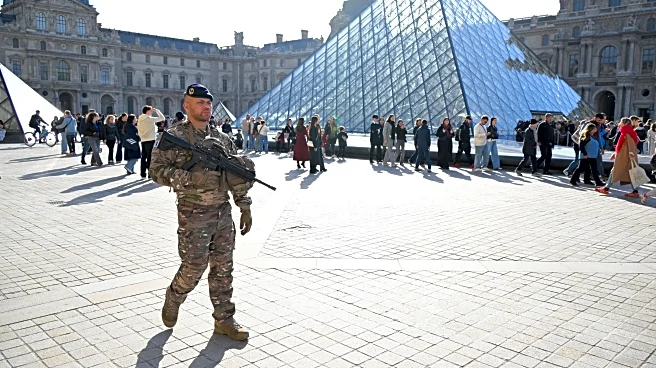What's Happening?
Paris prosecutor Laure Beccuau has identified the recent jewellery heist at the Louvre as the work of 'petty criminals' rather than a professional gang. Four suspects have been charged in connection with
the theft, which involved over €88 million worth of jewels from the museum's Apollo gallery. The suspects, all from Seine-Saint-Denis, include three men with extensive criminal records and a woman charged with complicity. The stolen items include a brooch belonging to Empress Eugénie and a royal necklace with emeralds and diamonds. Despite the arrests, the stolen jewels have not been recovered, and the fourth member of the group remains at large.
Why It's Important?
The identification of the Louvre heist as the work of petty criminals rather than organized crime highlights the evolving nature of criminal activity in France. This case underscores the potential for individuals outside traditional crime networks to commit significant thefts, challenging law enforcement's ability to predict and prevent such incidents. The theft has implications for museum security protocols, prompting a reevaluation of measures to protect valuable artifacts. Additionally, the heist's impact on public perception of safety in cultural institutions may influence future policies and funding for security enhancements.
What's Next?
Authorities continue to search for the remaining suspect and any accomplices involved in the Louvre heist. The investigation may lead to further arrests and the recovery of the stolen jewels. In response to the theft, museums across France may implement stricter security measures to prevent similar incidents. The case may also prompt discussions among policymakers and cultural leaders about the allocation of resources for museum security and the need for innovative approaches to safeguard cultural heritage.
Beyond the Headlines
The Louvre heist raises broader questions about the intersection of crime and cultural heritage. The theft of historically significant items, such as the jewels belonging to Empress Eugénie, highlights the vulnerability of cultural artifacts to criminal activity. This incident may spark debates about the ethical responsibilities of museums to protect their collections and the role of government in supporting these efforts. Additionally, the heist's impact on public trust in cultural institutions could influence future engagement with museums and their exhibitions.












